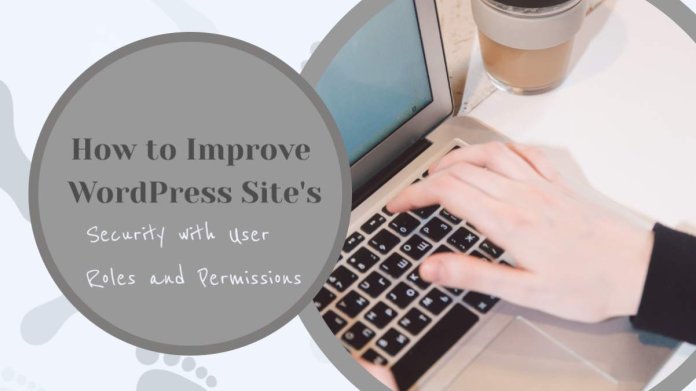With the increasing popularity of WordPress as a content management system (CMS), it becomes imperative to prioritize the security of your website. User roles and permissions are essential features within WordPress that can significantly bolster your site’s security. By properly managing user roles and permissions, you can limit access to sensitive areas, prevent unauthorized modifications, and protect your valuable content. In this article, we will explore how to improve your WordPress site’s security using user roles and permissions, with a focus on two powerful plugins: Login Lockdown and WP Force SSL.

Understanding User Roles and Permissions in WordPress
WordPress offers a robust user management system that allows you to assign specific roles and permissions to different users. By default, WordPress provides six user roles: Administrator, Editor, Author, Contributor, Subscriber, and Super Admin (for multi-site installations). Each role carries different levels of access and capabilities, enabling you to control what users can do on your site.
- Administrator: Administrators have full control over the WordPress site, including the ability to install plugins, modify themes, manage users, and access sensitive settings. Exercise caution when assigning this role and limit it to trusted individuals.
- Editor: Editors can publish, edit, and delete any post or page on the site. However, they do not have access to site settings or user management.
- Author: Authors can create, edit, and delete their posts. They cannot modify other users’ content or access site settings.
- Contributor: Contributors can write and edit their posts but cannot publish them. Their content requires review and approval from higher-level users.
- Subscriber: Subscribers can only manage their user profiles and leave comments. They have no content creation or editing privileges.
- Super Admin: This role is specific to WordPress multi-site installations and has full control over all sites within the network.
By assigning appropriate roles to users, you can maintain a secure environment while ensuring efficient collaboration.
Utilizing Login Lockdown for Enhanced Security
Login Lockdown is a powerful plugin that adds an extra layer of security to your WordPress site by protecting it against brute-force attacks. Brute-force attacks involve malicious attempts to gain unauthorized access by repeatedly guessing usernames and passwords. Login Lockdown thwarts such attacks by limiting the number of login attempts from a specific IP address within a defined timeframe.
Once installed, Login Lockdown tracks failed login attempts and automatically blocks the IP address after a certain number of unsuccessful tries. This proactive measure ensures that malicious actors cannot continue their brute-force attempts, safeguarding your WordPress site from unauthorized access. With Login Lockdown, you can configure settings such as the number of login retries allowed, the lockout duration, and whitelisting trusted IP addresses.

Securing Communication with WP Force SSL
WP Force SSL is a valuable plugin that enhances your site’s security by enforcing secure communication through HTTPS. Hypertext Transfer Protocol Secure (HTTPS) encrypts the data transmitted between your site and its visitors, preventing unauthorized interception or tampering. WP Force SSL ensures that all connections to your WordPress site are automatically redirected to the secure HTTPS protocol.
By enabling SSL (Secure Sockets Layer) encryption, you protect sensitive information, such as login credentials, payment details, and use personal data, from potential threats. WP Force SSL simplifies the process by automatically detecting SSL certificates and handling the necessary redirects. It also provides options to exclude specific pages or URLs from SSL enforcement if required.
Best Practices for Managing User Roles and Permissions
- Use the Least Privilege Principle: Assign roles with the least privileges necessary for users to perform their tasks. Avoid giving full administrative access unless required.
- Regularly Review User Roles: Periodically review and update user roles and permissions as your site’s needs evolve. Remove unnecessary privileges from inactive or former users.
- Enable Two-Factor Authentication: Implement an additional layer of security by enabling two-factor authentication (2FA) for user logins. This adds an extra step, such as a verification code sent to a mobile device, to validate user identity.
- Additionally, incorporating WP Captcha can help prevent unauthorized access by adding an extra layer of security to your login forms.
- Update Plugins and Themes: Regularly update your WordPress plugins and themes to ensure you have the latest security patches. Outdated software can pose security vulnerabilities.
- Secure Login Credentials: Encourage users to create strong, unique passwords and avoid sharing them. Additionally, educate users about the importance of keeping their login credentials secure.
Protecting your WordPress site from security threats is paramount in maintaining a safe online presence. By leveraging user roles and permissions effectively, you can fortify your site’s security and prevent unauthorized access. Plugins like Login Lockdown and WP Force SSL serve as invaluable tools to enhance your site’s protection against brute-force attacks and ensure secure communication. By following best practices, regularly reviewing user roles, and keeping your WordPress installation up to date, you can significantly reduce the risk of security breaches and create a safer environment for your website and its users.
